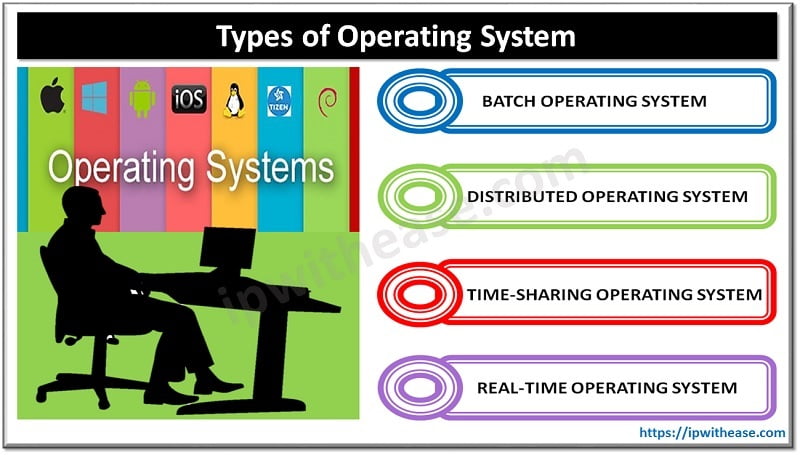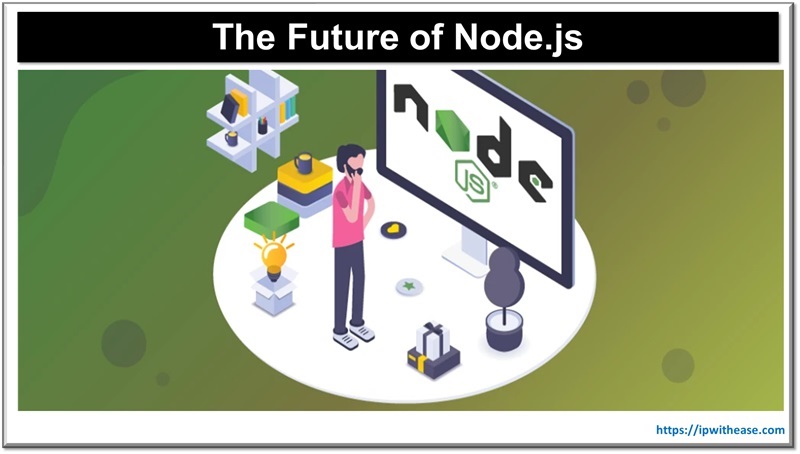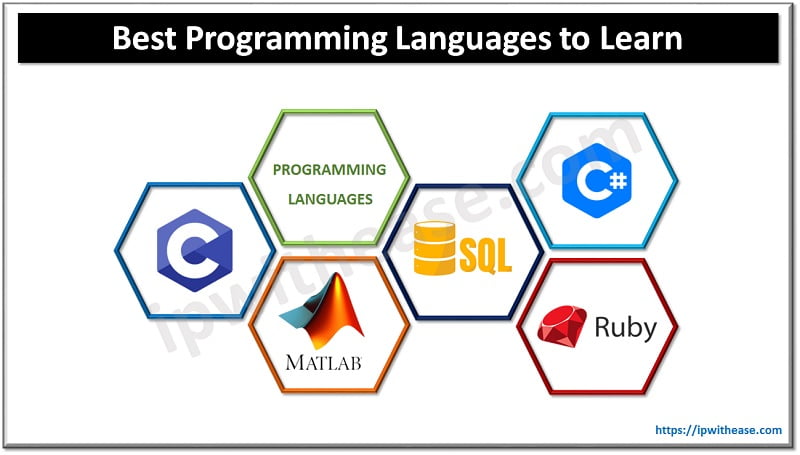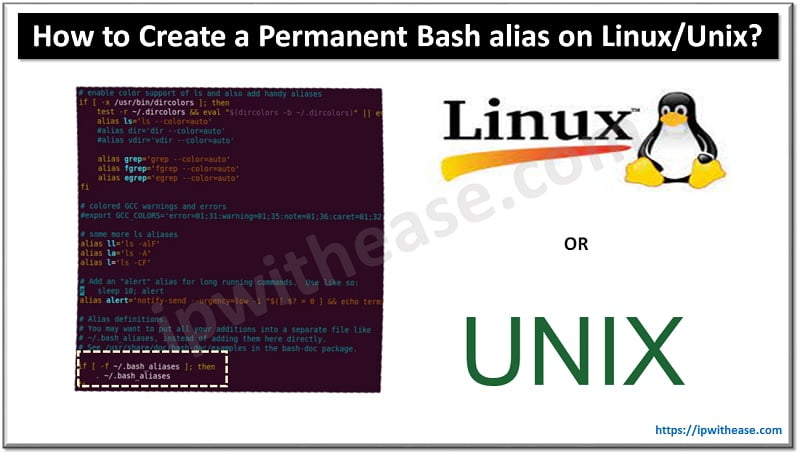Table of Contents
If you want to call yourself a technical person, then at least you should know about the operating systems and their types. In this article, you will get a clear idea about Operating Systems and their types. Here are the contents discussed in this article.
What is an Operating system?
An operating system is computer software that acts as an interface between both hardware and software that are running in the computer. It is the prime software or core software that runs the other software in the system.
For example, Personal Computer OS like Windows, Mac, and mobile OS like Android are mostly used by people. It is the first software that will be installed when you purchase a computer.
Features of Operating Systems
- Security Management – It provides three levels of securities to the user end. They are – File access level, system level, Network level.
- The main feature of the Operating system is the user interface. It gives user-friendly functions to the users. Each Operating system has its operating system.
- Next is process management. The OS is the software that runs all the programs and allocates the resources like RAM, CPU core, etc… To the respected functions.
- The next important feature is memory management. It controls the hardware assign memory space to respected functions
- Scheduling – It manages the regular update and other schedules the task based on the importance of them.

Types of Operating Systems
One of the common mistakes people make while discussing the types of Operating systems is they will confuse the type with brands or products. For example, Windows OS, macOS, Linux are different products of Desktop or Computer OS.
Whereas Android and Windows are different, the former is Mobile OS and the latter is a Computer OS. There are different types of operating systems and they can be classified under different categories like User-friendliness, device, use, and cost.
Here are the most popular types of Operating System in use –
1.Batch Operating system
This and the operating system do not communicate with the operator directly. The operator will collect the similar jobs requiring the same response and group them as a batch. Multiple users can easily use the batch-based operating system. You can easily manage large work repeatedly as the idle time of the batch system is very low.
At the same time there are some disadvantages with the batch system. Importantly, operators should have enough knowledge to operate the batch Operating system. It is costly and hard to debug. The best examples of Batch Operating Systems are – Payroll Systems, Bank Statements, etc…
2.Distributed Operating System
It is the widely used type of operating system in the world; here multiple computers are connected in a single shared communication network. Each computer will have its own memory space and CPU. It is also known as loosely coupled systems.
The major advantage of using these types of operating systems is that one user can access the files of another user that is not stored in his system. But at the same time, the failure of the main network will collapse the whole network or system. Examples of distributed Operating Systems are – Locus, etc…
3.Time-sharing Operating Systems
Here each task is given a certain time to execute so the system can work smoothly. They are also known as multi-tasking systems. The task can be given from single or multiple users and each user will get the time of CPU as they use a single system.
There is a reliability problem and data communication problem. However, the idle time of the CPU is reduced. Examples of the time-sharing operating system – Multics, UNIX, etc…
4.Real-Time Operating System
This type of operating system gives the real-time response, that is the time interval between each response will be very small. Real systems are used where the time is very strict like missile systems, air traffic systems, etc…
They further classified two types –
- Hard Real-Time systems and
- Soft Real-Time Systems.
You can find examples for the real-time operating systems in scientific experiments, medical imaging systems, etc…
Related FAQs
1. What is an operating system (OS)?
An operating system (OS) is software that manages computer hardware and software resources and provides common services for computer programs.
2. What are the main functions of an operating system?
The main functions include managing hardware resources, providing a user interface, executing and providing services for applications, and ensuring security and access control.
3. What are the types of operating systems?
Types include batch operating systems, time-sharing/multi-user operating systems, distributed operating systems, real-time operating systems, and embedded operating systems.
4. What is the latest version of Windows?
As of now, the latest version is Windows 11.
5. How can I update my Windows OS?
You can update your Windows OS by going to Settings > Update & Security > Windows Update, and then clicking on “Check for updates.”
6. What is Safe Mode in Windows?
Safe Mode is a diagnostic mode that starts Windows with a minimal set of drivers and services. It is used to troubleshoot and resolve issues.
7. What is the latest version of macOS?
The latest version as of now is macOS Ventura.
8. How do I take a screenshot on a Mac?
You can take a screenshot by pressing Shift + Command (⌘) + 3 for the entire screen or Shift + Command (⌘) + 4 for a selected portion.
9. How do I update my macOS?
You can update macOS by going to System Preferences > Software Update, and then following the prompts to download and install updates.
10. What are the different distributions of Linux?
Popular distributions include Ubuntu, Fedora, Debian, CentOS, and Red Hat Enterprise Linux.
11. How do I install software on Linux?
Software can be installed using package managers like apt for Debian-based systems (sudo apt install package_name) or yum for Red Hat-based systems (sudo yum install package_name).
12. What is the command line interface (CLI) in Linux?
The CLI is a text-based interface used to interact with the operating system by typing commands. It provides powerful and flexible control over the system.
13. What should I do if my computer is running slow?
Steps to troubleshoot include restarting your computer, closing unnecessary programs, checking for malware, updating the OS and drivers, and freeing up disk space.
14. How can I check for malware on my system?
Use built-in or third-party antivirus and anti-malware tools to scan and remove malicious software.
15. What should I do if my computer won’t start?
Check the power supply, ensure all cables are connected, try booting in Safe Mode (Windows) or Recovery Mode (Mac), and consider hardware issues.
Please share your thoughts on the article in the comment section below.
Continue Reading:
What is Distributed Operating System (DOS) ?
Difference between Operating system & Application Software
ABOUT THE AUTHOR

You can learn more about her on her linkedin profile – Rashmi Bhardwaj



